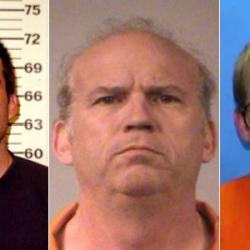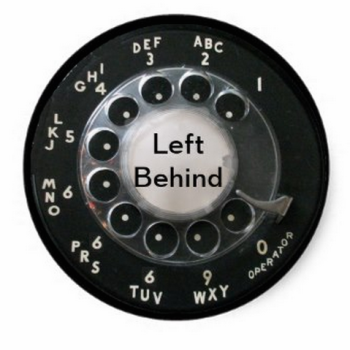In Georgetown, Del., the Thursday after Election Day is Return Day.
This is a great tradition that goes back to pre-mass media days, when the people of Sussex County would gather to hear the election returns read aloud on The Circle. These days, of course, everyone already knows the results of the election well before the Return Day festivities, but the ceremony is still beloved as a celebration of democracy and the peaceful transition of power that democracy requires.
The general feel of Return Day is something like Groundhog Day in Punxsutawney, Pa. (or, really, Groundhog Day in Woodstock, Ill., where they filmed the movie) — with top hats and tails and an elaborate adherence to charmingly odd customs.
There's a parade featuring all of the candidates for public office, the winners and losers riding together in horse-drawn carriages. The photo here (by Scott Nathan of The News Journal) is from Return Day in 2006. That's newly elected Delaware Attorney General Beau Biden on the right, riding with Ferris Wharton, the man he'd just defeated in the election. Both men knew, throughout the campaign, that they'd both eventually wind up there, sitting next to one another in that carriage. It's hard to say how much knowing that influences a candidate's behavior, but I like to think that it helps to keep campaigns a bit more honest and civil.
Beau Biden's dad, Vice President-elect Joe Biden, rode in today's Return Day parade, seated next to Christine O'Donnell, whom he defeated in his bid for re-election to the United States Senate despite being out of state for almost the entire campaign.
After the parade, there's a ceremonial burying of the hatchet, a ritual conducted cooperatively by all the parties — winning or losing — from the recent election. That ritual involves a hatchet that is both symbolic and actual. "Burying the hatchet" is a metaphor not usually meant literally, but on Return Day the meaning of that metaphor is reaffirmed tangibly with an actual hatchet that is actually buried. They dig a hole, place it in the ground and cover it with dirt.*
This ritual hatchet-burying, in other words, is a kind of signum efficax gratiae for the democratic process — both a symbol and a tangible vehicle for meaning. It's a good ritual, not just for its small-town emphasis on politeness and civility as niceness,** but because it reaffirms the legitimacy of the whole process. Democracy requires the peaceful transfer of power and that, in turn, requires that the losing side accept the legitimacy of that transfer.
That's why I wish that VP-elect Biden could have ridden in a three-seated carriage in today's Return Day parade, with Gov. Palin riding along too. That might have helped to remind her most vehement and angriest supporters that this is how democracy works. The votes have been counted, the results are clear and legitimate, and we accept them as such — without winking. Those supporters have spent the past several months trying to convince themselves that our 44th president is some kind of fifth-column infiltrator acting on behalf of the secretive Socialist Caliphate conspiracy or some such thing. Watching their leader ride along in the Return Day parade and seeing her help to bury the hatchet might have been a helpful step toward calming part of a mob that really, really needs to calm down.
There is, of course, another subtle benefit to Return Day. It helps the electorate to accept that what they're seeing is really real. I don't really need that for the Delaware election results. I'm fully convinced the elections there really happened and I'm quite capable of wrapping my brain around that without the sense that I'm somehow just imagining all of it. With the results of the national election — the presidential election — I'm not quite there yet. I'm still a bit back on my heels. A bit like David Rees describes here. I'm going up to complete strangers to ask them if they just saw what I think I saw.
"Did I really just see that?" I ask my friend, but he can't answer yet. He's still fondling a pile of confetti from last week's World Series parade. He's still half-dazed — going up to complete strangers to ask them if it's really true and the Phillies really won a world championship. "Yes," I tell him. "That really just happened. Now tell me the same thing about the election."
– – – – – – – – – – – –
* I sometimes wonder if witnessing this ceremony every two years for the past three decades might account for one of VP-elect Biden's verbal quirks. He tends to use the word "literally" as an intensifier — like "very" or "frakking" — and thus frequently uses "literally" when he means "figuratively." On Return Day, the hatchet is buried both literally and figuratively, so that probably doesn't help clear up the distinction for those who, like Biden, tend to get the two things confused.
** Which is the downside of Return Day. Civility and niceness are not the same thing. Sometimes civility precludes niceness. There's a whole cottage industry built around bemoaning the lack of "civil discourse" that actually cares less about civility than it does about good manners. Good manners often, but not always, provide a way for us to behave civilly, which is to say with honesty and justice, without giving unnecessary offense. As such, good manners are often useful. But when such a mannered response prevents or impedes the pursuit of honesty or justice, then good manners become downright un-civil. Civility and niceness are usually compatible, but sometimes not. And they are certainly not identical.











